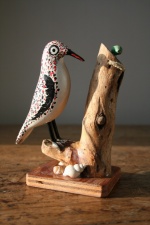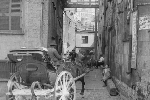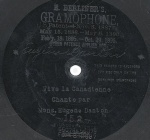Recent Articles
The Point: a Franco-American Heritage Site in Salem, Massachusetts
Traditional French Songs in Ontario
Fort William, Crossroad of a Fur Trading Empire
The Guigues Elementary School in Ottawa
Centre franco-ontarien de folklore (CFOF)
Centre de recherche en civilisation canadienne-française (CRCCF)
Articles
-

Adapting to Winter: Transportation
Winters in Quebec are long and harsh. When the first French immigrants settled on the banks of the Saint Lawrence, adapting to Quebec’s winter was a major challenge. Every aspect of day-to-day living was affected—agriculture and food supply, transportation, lodging, clothing, human relations, and culture. Amerindians were instrumental in helping the settlers to adapt. Then, as one generation gave way to the next, the ingenuity of the inhabitants and their determination to alleviate the hardships of winter led to the invention of ever more effective tools and equipment and the development of new ways of dealing with the harsh conditions. Today, Quebeckers can take part in most of the same activities year round—a situation that was still inconceivable not so long ago. Our gradual adaptation to winter marks our history and our heritage and provides the artifacts that fill our museums and our memories.
-
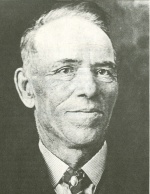
Alexis Lapointe, a.k.a. Alexis le Trotteur (1860-1924): the Man, the Legend
Alexis Lapointe, known as "LeTrotteur", "le Cheval du Nord," the "Surcheval," and the "Centaur", was the subject of both admiration and mockery in his day. Over the course of his lifetime, he remained a simple labourer, an odd man whose tomfoolery brought joy to those around him. In death, however, he became a mythical figure, a legendary athlete the likes of which he himself would never have imagined. And what can be said about the exhumation of his remains from a cemetery in La Malbaie in November 1966, 42 years after his death? What about the exhibition of his skeleton in museums throughout the Saguenay for 35 years? This poor fellow seems to have become more famous in death than in his life.
-
Animal Folk Art
Animal themed folk art is commonly found in the province of Quebec. Its origins are lost in the mists of time, most of the earliest creators being anonymous. This did not keep them from leaving works to posterity, whether they expressed an astonishing realism or the creator's flights of fantasy. For woodcarvers the number of subjects is varied but almost always in close relation with their natural surroundings. These artists have passed on their knowledge with each generation. This art, once ignored and even despised, has over recent decades started to attract the attention of collectors, museologists and researchers from various fields. After having been long neglected, animal folk sculpture now claims its rightful place in museums.
-

Canadian Horse: a Quebec Agricultural Treasure
The Province of Quebec is the cradle of North America's oldest equine breed: the Canadian Horse. Since the end of the 19th century, this heritage horse breed, also known as the "French Canadian Horse" or "Little Iron Horse," has been the objective of many conservation initiatives, including efforts to create a detailed listing of its distinct characteristics, as well establishing organizations for assuring the continuity of the breed. Since 1999, it has been recognized at the provincial level as a Quebec agricultural heritage breed, joining the ranks of the Canadienne Cow and the Chantecler Chicken. It was named the National Horse of Canada by the Canadian parliament in 2002. In 2007 it became an archetypal icon in the Province of Quebec, when the Transport Ministry ruled to include it as an official road sign pictograph, as a part of its tourist signing policy.
-
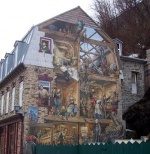
Fresco Wall Art in the Quebec City Borough of La Cité
In the last dozen years, a number of fresco paintings have popped up across Quebec City, becoming a real tourist attraction and a major component of the city's urban heritage. These frescoes depict the history of the city and its inhabitants and help visitors discover or recall fragments of the past. The murals, which are an ongoing heritage project, continue to change the face of Quebec City; they captivate passers-by and add a splash of colour and history to once-anonymous urban spaces.
-
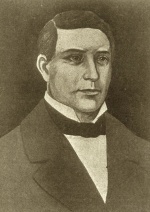
Jos Montferrand, Legendary Figure of the Ottawa Valley
Joseph Montferrand, dit Favre, better known as Jos Montferrand, is still considered one of the greatest figures of French Canadian legend. The hero is referred to by many different names across North America, including Montferan, Muffraw, Mouffreau, Mufferoin, Maufree and Murphy. While he is closely associated with the Ottawa Valley, this lumberjack, log driver, foreman, raftsman and strongman was not born and raised there. He did, however, spend half of his life in the region, drawn by the forest industry that proved to be the economic force of the Ottawa Valley in the 20th century. It was also in this region that he became a character of legend; today, there is no way to distinguish his real exploits from those that are purely folklore.
-
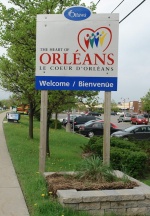
Orléans: A Franco-Ontarian Suburb
In a mere forty years Orléans has gone from an overwhelmingly French-speaking village to a suburb of Ottawa where scarcely one-third of the population has French as its mother tongue. Nonetheless, the French presence remains vibrant and local francophones are exceptionally dedicated to preserving their language and culture and building on their achievements. No other place in Ontario boasts cultural programs and facilities like those that serve Orléans’ francophone community. The fight twenty years ago to have the provincial government spell “Orléans” with the accent on the “e” is an eloquent example of the community’s determination to stand up for its rights with regional and provincial authorities.
-

Plains of Abraham
Of all the places associated with French heritage in North America, the Plains of Abraham are undoubtedly among the most frequently visited and best known natural and historic sites. The battles that were fought there in 1759 and 1760 between the French and English armies have marked the collective memory as a major turning point in the history of Canada and the Western world. Over the course of the years, in accordance with ever-shifting and evolving loyalties, the site has served to convey a number of symbolic representations and has stood for many ideals. Nevertheless, the real history of the Plains of Abraham remains little known.
-

Quebec Beer, Brewers and Breweries
Beer is the most popular alcoholic beverage in Canada and Quebec. Beer drinking as a tradition dates back to the days of New France, making brewing one of the oldest trades practiced in the Lawrence Valley. However, both brewing practices and the popularity of beer underwent significant changes, as the British tradition began to have a strong influence on the beer industry through the establishment of the first large-scale modern-day brewery, the Molson Brewing Company. The Industrial Revolution made it possible for beer to become a mass-produced commodity, brewed and bottled in factories and distributed by increasingly sophisticated infrastructures. Nowadays, microbreweries have revived the practices of artisanal brewing, as a number of festivals celebrate the many varieties of this ancient beverage.
-
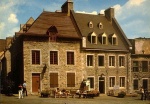
Quebec’s Place-Royale, the Reflection of a City
Quebec City’s Place-Royale was entirely rebuilt between the late 1960s and the 1980s. Work undertaken on the site’s buildings was intended to bestow them with a heritage character evocative of the French Regime. The primary goal of this ambitious renovation project, funded by the governments of Quebec and Canada, was to make Place-Royale a major tourist attraction in Quebec City. In the process, it restored one of the site’s earliest functions as a symbolic city centre.
-
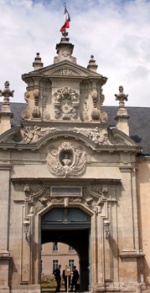
Royal College La Flèche, Wellspring of Missionary Zeal
A number of key figures from the early days of New France and Acadia either studied or taught at the Jesuit college in La Flèche. Notable figures include François Montmorency de Laval, first bishop of New France; Jérôme Le Royer de la Dauversière, the visionary behind the founding of Montreal; and several Jesuit missionaries, among them Canadian martyrs Isaac Jogues and Gabriel Lalemant. In the 18th and 19th centuries, the college, whichis located in the former French province of Anjou, set itself clearly apart from the other institutions training missionaries bound for America, thereby playing a key role in the missionary history of New France and Acadia and inthe creation of the Canadian Catholic Church.
-
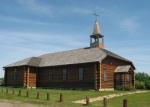
Saint-Laurent Pilgrimage in Saskatchewan
Saint-Laurent de Grandin is a very important religious heritage site for Saskatchewan's French-speaking community, which is also known as the Fransaskois. There once was a time when all the Fransaskois and all the French-speaking Métis of this area of Saskatchewan were devout Catholics, particularly since the Oblate clergy had played an active role as missionaries in their midst. The Saint-Laurent mission has always attracted a large number of the faithful. Located in the centre of the province on the western shore of the South Saskatchewan River, approximately ten kilometres north of Batoche, the former Métis mission receives thousands of devotees every summer for the annual pilgrimage dedicated to Our Lady of Lourdes. Today the pilgrimage is organized by the Parish of Duck Lake.
-
The Augustinian Monastery of Quebec
In 2000 the Augustines de la Miséricorde de Jésus religious community decided to assemble the archives and collections from their twelve monasteries under one roof and to make this treasure trove of information available to the public as part of the Graven In Our Memories project. The Augustinians opted to exhibit their heritage at the Hôtel-Dieu de Québec monastery, built in Quebec City’s Upper Town in the years after the first members of the order arrived in 1639. The Lower Town premises of Hôpital-Général de Québec—which also date back to the 17th century—will be integrated into this heritage complex, to be known as Monastère des Augustines (the Augustinian monastery).
-

The Clergy and the Origins of Quebec Cinema: Fathers Albert Tessier and Maurice Proulx
A handful of priests were among the first people in Quebec to use a movie camera. They were also among the first to grasp the cultural significance of cinema. Two individuals are particularly significant in this regard: Fathers Albert Tessier and Maurice Proulx. Today they are widely recognized as pioneers of Quebec cinema arts. Since 2000, Quebec cinema has been experiencing renewed popularity. Nevertheless, the key role played by the clergy in the development of a cinematographic and cultural tradition before the Quiet Revolution of the 1960s has not been fully appreciated, even though they managed nothing less than a collective heritage acquisition of cinema during a period dominated by foreign productions. After initially opposing the cinema-considering it an "imported" invention capable of corrupting French-Canadian youth-the clergy gradually began to promote the showing of movies in parish halls, church basements, schools, colleges and convents. It came to see film as yet another tool for conveying Catholic values.
-
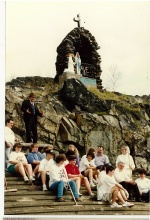
The Grotto of Our Lady of Lourdes of Sudbury
The cultural identity of Ontario'sFrench speaking population has always been closely tied to its religious heritage. Since the construction of the Grotto of Our Lady of Lourdes of Sudbury in 1907, the grotto has been an important religious site for prayer and religious gatherings for Northern Ontario's French language community. It is also considered to be one of Sudbury's historical milestones. Over the last hundred years, the grotto has undergone of many changes. There have been periods of considerable popularity, but also times when it has been neglected. Nevertheless, due to the efforts and care of many community members, the site has now regained its former importance as a site for community events and as an ecumenical place of worship.
-
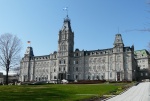
The Parliament Building of Quebec: A Place of Memory
Erected between 1875 and 1886, the Quebec Parliament Building stands as one of the finest examples of Quebec’s architectural heritage. Its craftsmanship and style evoke the past, present and future of a nation committed to democracy. And its imposing freestone façade, distinctive silhouette and interior design all bring to mind—as its architect Eugène-Étienne Taché intended—the French origins of this North American nation. The building’s east-facing façade, just a stone’s throw from the fortifications of the Old City, is adorned with a series of sculptures that hearken back to significant events and figures in the founding of Canada and Quebec. Carved above the main entrance is Quebec’s motto, “Je me souviens.” A reference to Quebec’s evolution since 1534, the motto actualizes political history and reminds observers that to this day the parliament is the seat of the people’s assembly and their elected government.
Images
-
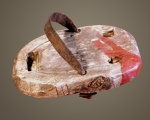
Raquette de cheval se
rvant au travai... -
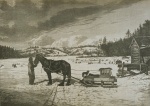
Cheval en raquettes s
ur la rivière d...Article :
Adapting to Winter: Transportation -
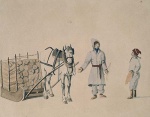
Deux habitants, avec
cheval et traîn...Article :
Alexis de Tocqueville’s visit to Lower Canada in 1831 -

58_Cheval_du_Nord.jpg
Article :
Alexis Lapointe, a.k.a. Alexis le Trotteur (1860-1924): the Man, the Legend
-

Alexis le Trotteur co
ntre le cheval ...Article :
Alexis Lapointe, a.k.a. Alexis le Trotteur (1860-1924): the Man, the Legend -
Cheval
Article :
Animal Folk Art -
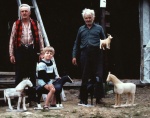
Les frères Gaudrault
Article :
Animal Folk Art -

Extraction d’un fer à
cheval par un ...
-
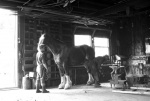
Ferrage d’un cheval d
e labour canadi... -

Deux habitants, l'un
avec un cheval,... -
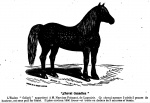
Goliath, étalon de la
race Canadien,... -

Le cheval canadien
-

Pictogramme du Cheval
Canadien, tel ... -

Plan rapproché de Pra
line, jument de... -

La deuxième cathédral
e de Saint-Boni...Article :
The Cathedrals of Saint-Boniface -
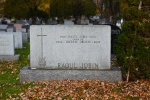
Monument funéraire du
célèbre ténor ...
-

L'Abbé Proulx filmant
un cheval de l...Article :
The Clergy and the Origins of Quebec Cinema: Fathers Albert Tessier and Maurice Proulx -
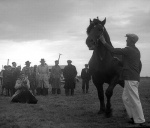
L'Abbé Proulx filmant
un cheval de l...Article :
The Clergy and the Origins of Quebec Cinema: Fathers Albert Tessier and Maurice Proulx -

L'Abbé Proulx filmant
une scène de l...Article :
The Clergy and the Origins of Quebec Cinema: Fathers Albert Tessier and Maurice Proulx -

L'Abbé Proulx filmant
une scène de l...Article :
The Clergy and the Origins of Quebec Cinema: Fathers Albert Tessier and Maurice Proulx
-
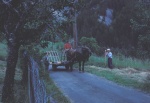
Le cheval. Attelage p
endant la saiso... -

Cheval attelé à un be
rlot, L'Islet-s...Article :
The Criée des Âmes in L’Islet-sur-Mer -
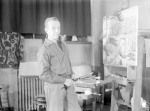
Edwin C. Holgate. 6 m
ai 1940.Article :
Emblematic Landscapes of Lac-Tremblant-Nord: Natural Scenic Area and Cultural Heritage Asset -

Plaque datant de 1731
, retrouvée lor...Article :
Fortress of Louisbourg: from History to Historic Site
-

Les Fresques des Pili
ers, Contes che...Article :
Fresco Wall Art in the Quebec City Borough of La Cité -
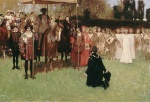
Jacques Cartier racon
tant le récit d...Article :
Jacques Cartier -
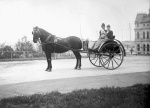
Calèche et cheval
Article :
The Chemin du Roy between Quebec City and Montreal -
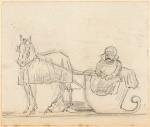
Une carriole avec un
cheval, vers 18...Article :
The Chemin du Roy between Quebec City and Montreal
-

Cornélius Krieghoff,
Traineau tiré p... -
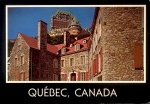
La Maison Chevalier,
QuébecArticle :
Old Quebec, a UNESCO World Heritage site Quebec’s Place-Royale, the Reflection of a City -

Assemblée générale Ca
rdinal Taschere... -

Basse-ville de Québec
et le London C...Article :
Place-Royale: Where Quebec City Began Quebec’s Place-Royale, the Reflection of a City
-
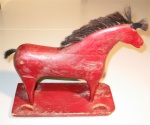
Cheval de bois
-

Croix érigée sur un
terrain éleve...Article :
Société historique de Saint-Boniface and Franco-Manitoban Heritage -

Objets retrouvés dan
s le cercueil o...Article :
Société historique de Saint-Boniface and Franco-Manitoban Heritage -

Théâtre l’Escaouette,
Vie d'cheval (...
Vidéos
Documents sonores
Documents PDF
-
Extrait du roman Le Cheval du Nord de Marjolaine Bouchard (Éditions JCL, 1999)
Taille: 44 Kb
Article :
Alexis Lapointe, a.k.a. Alexis le Trotteur (1860-1924): the Man, the Legend -
Paroles de la chanson « Train de vie (le Surcheval) » du groupe québécois Mes Aïeux
Taille: 50Kb
Article :
Alexis Lapointe, a.k.a. Alexis le Trotteur (1860-1924): the Man, the Legend -
« Des encouragements à la production du cheval »
Cet article de la Gazette des campagnes (11e année, no 7 (28 novembre 1872) décrit la manière dont le marché américain a modifié la race canadienne et les diverses politiques employées par les gouvernements pour protéger ce cheval.
-
«Notre petit cheval canadien»
Cet article de la Gazette des campagnes (27e année, no 19 (1er mai 1890) explique les caractéristiques de la race et la dégénérescence alors observée depuis quelques décennies.
-
Loi sur le cheval national du Canada
-
Texte décrivant les meilleures conditions d'élevage des chevaux canadiens
Ce texte de Y. Chs CHAPAIS a été publié dans l'Appendice du dixième volume des journaux de l'Assemblée législative de la Province du Canada en 1851.
-
Extrait de Jean Chevalier, Bourguignon, de Pollionay, de la société de Jésus, Polymnie...
Ode chantée écrite par Jean Chevalier avec l'aide de ses élèves en 1647. Taille: 39 Kb
Article :
Royal College La Flèche, Wellspring of Missionary Zeal

